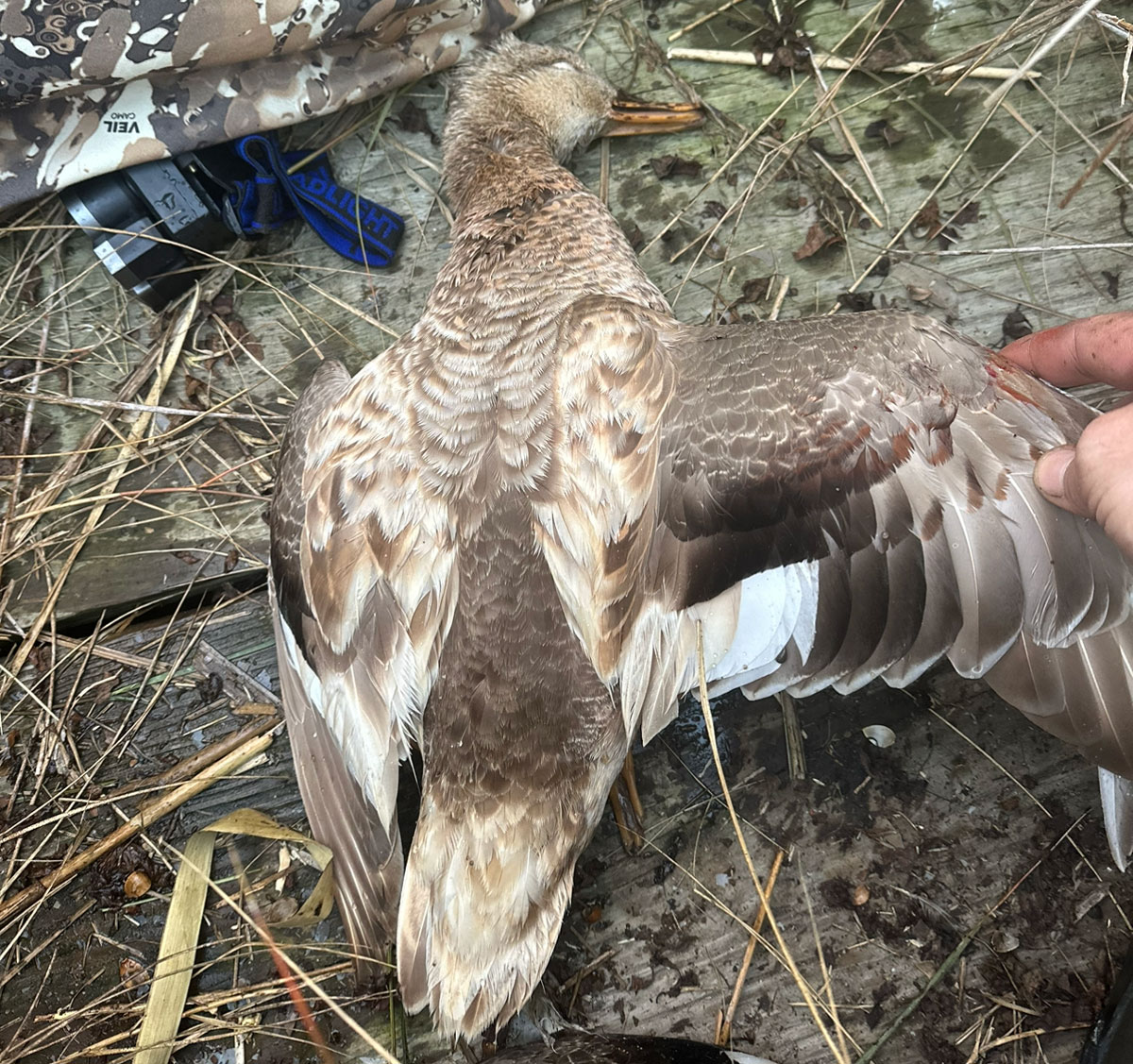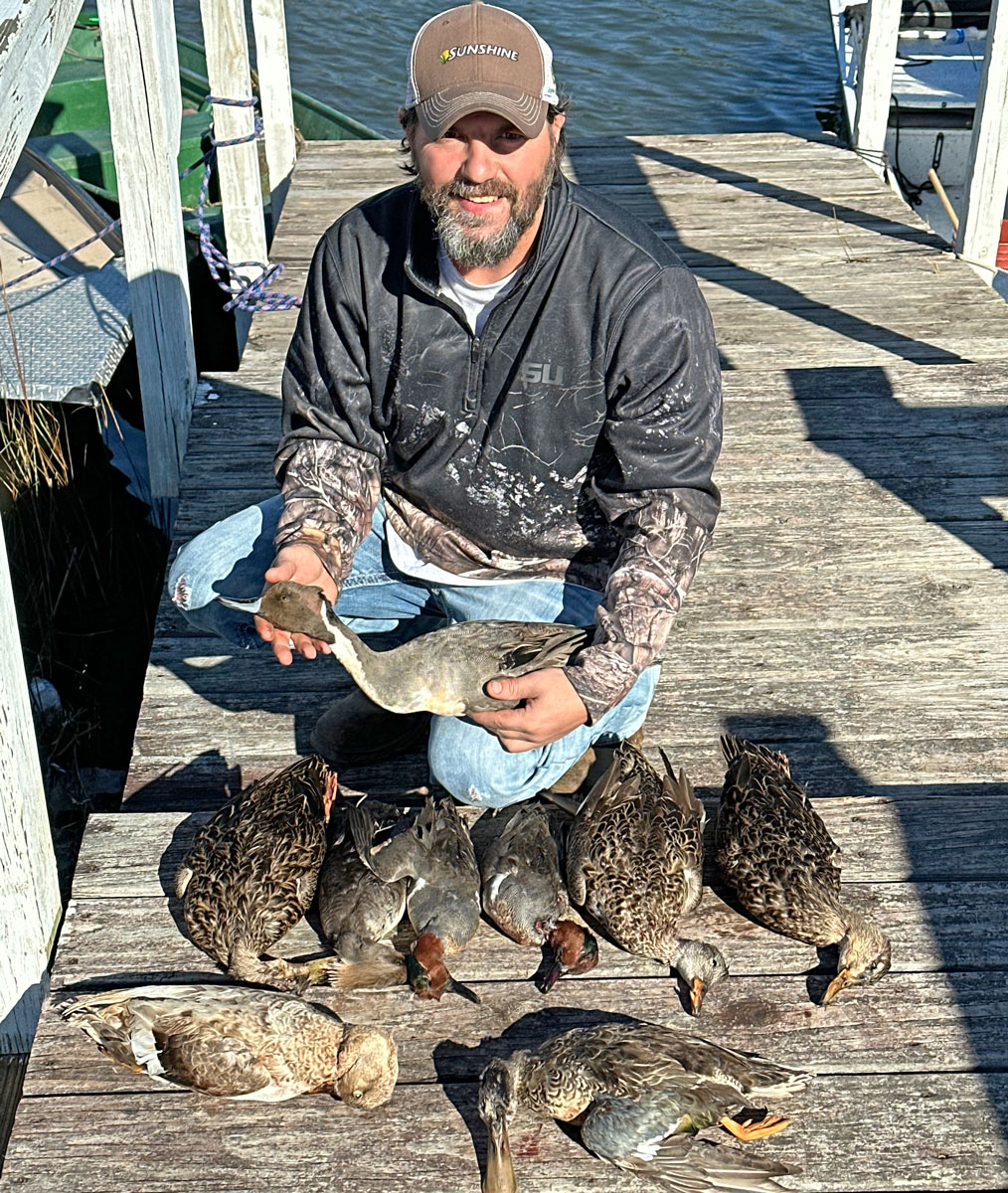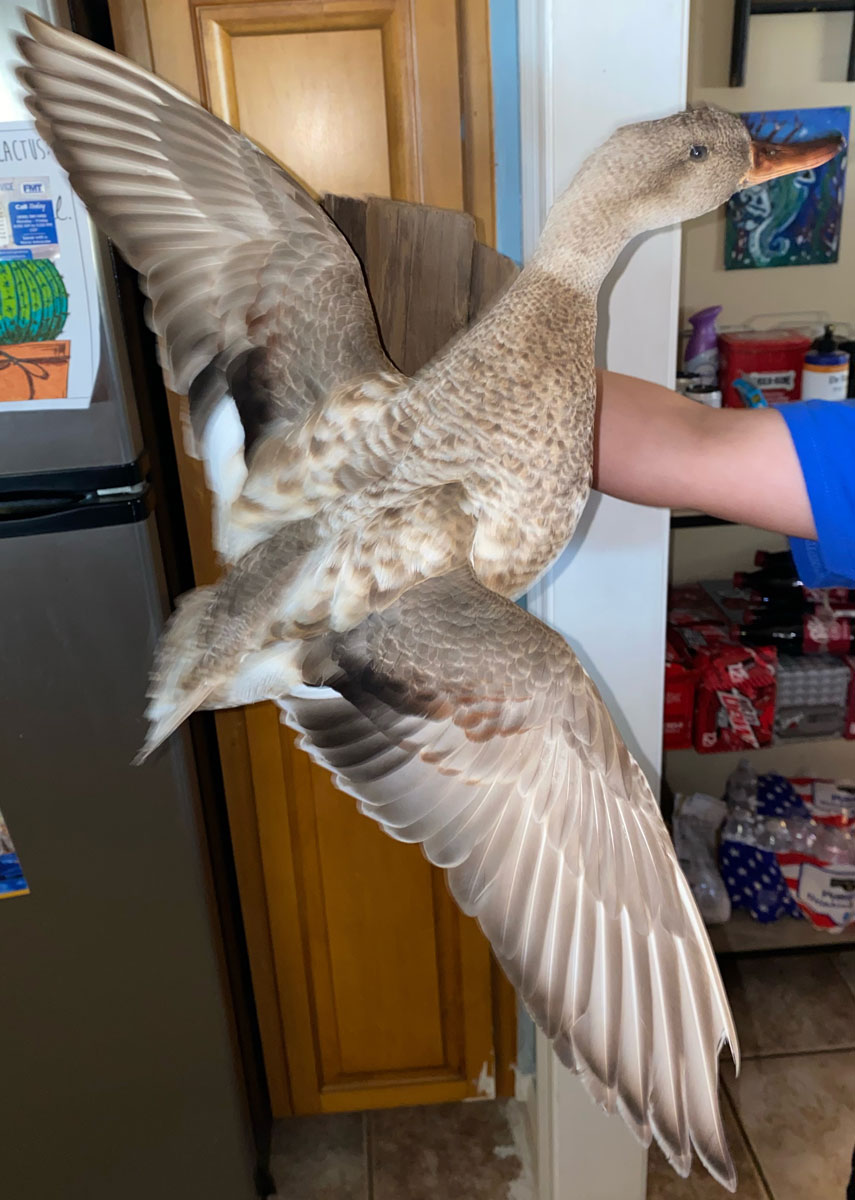 John Jones of Franklinton aims to mount male-female pairs of every species of ducks he can harvest at his hunting camp between Violet and Chalmette.
John Jones of Franklinton aims to mount male-female pairs of every species of ducks he can harvest at his hunting camp between Violet and Chalmette.
So when he carried a pair of gadwall to his taxidermist just after a late December hunting trip, he was in for a surprise. The light-plumaged hen, his taxidermist said when Jones picked up his finished ducks, was actually a leucistic hen gadwall, a bird as rare as perhaps 1 in 30,000.
Leucism is an inherited trait in birds and animals that disrupts the development of pigmentation, causing white coloration or white patches of splotches on the skin, fur or feathers. It is related to albinism, except that the pigment cells in the eyes of leucistic birds or animals are not affected – they aren’t pink like the eyes of albinos. And leucistic birds and animals are just slightly less rare than a true albino.

“I didn’t notice anything that far off about it. I just thought it was just a really light-colored hen when I killed it; I already had a male,” Jones said. “But when I picked it up from my taxidermist after he mounted it, he asked me if I knew how rare it was. I didn’t think anything about it until then.”
A unique gadwall
Jones, 41, killed the gadwall at around 7:20 the morning of Dec. 30 on a holiday trip to his camp, where he has hunted for 5 years. The bird fell to a 3 ½-inch load of No. 4 shot from his 12-gauge shotgun.
Later, he gathered a handful of ducks he wanted mounted to take to his taxidermist. His goal? To mount male-female pairs of every species he killed. Along with the two gadwall, he took a pintail and a shoveler, hoping someday to have a matching pair of both species.
“I want to get pairs mounted of every species I can,” he said.
Jason Olszak, waterfowl program manager for the Louisiana Department of Wildlife and Fisheries, confirmed that the hen gadwall was, in fact, leucistic. The only other option, he said, was that it was a hybrid – the product of two different duck species mating.
But, he said. “I can’t think of the other duck it would have hybridized with based on that coloration.”
